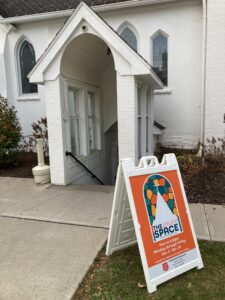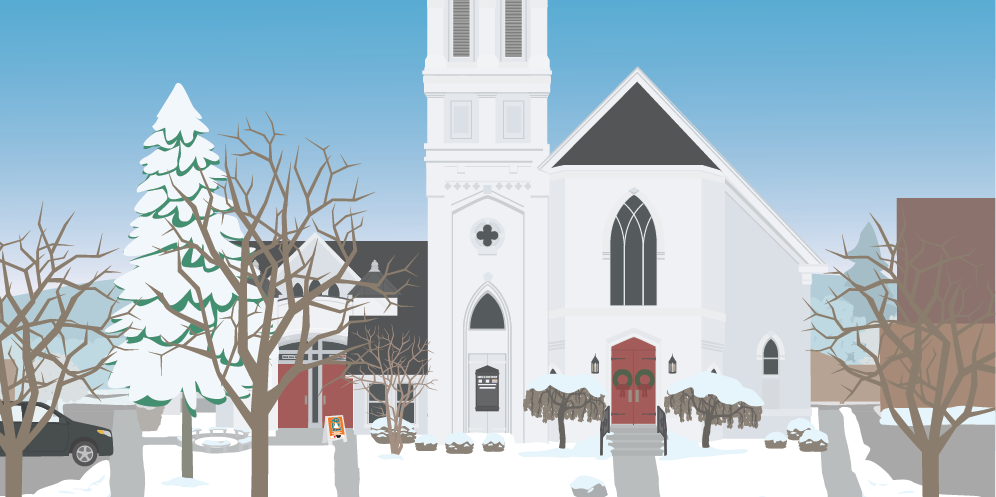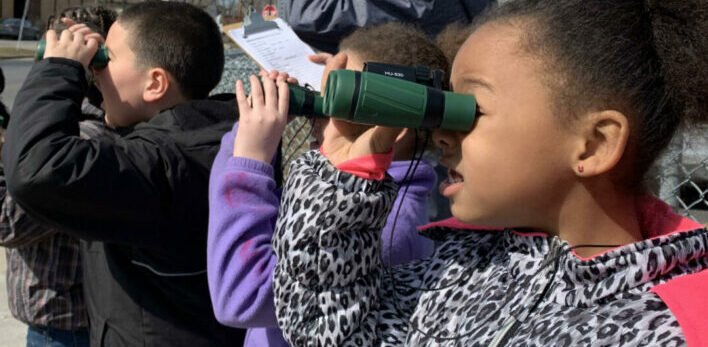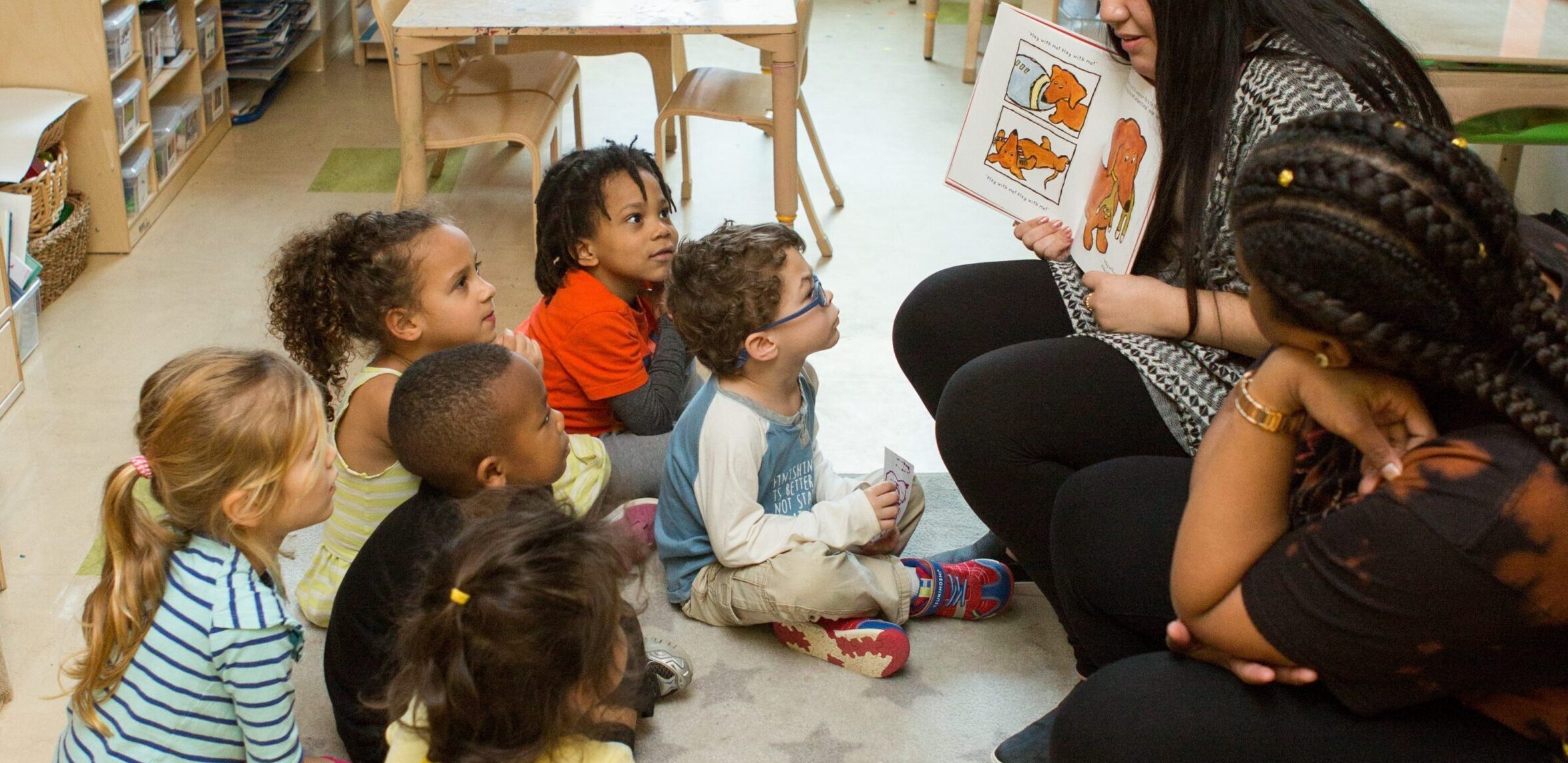Written By: Aster Parrott, Director of Public Health Infrastructure at the Rural Health Institute of New York and Ashley Lewis, Epidemiologist at the Rural Health Institute of New York
From November 2024 to April 2025, the Rural Health Institute of New York (RHI) and other Cortland County community partners successfully piloted a low-threshold, data-driven daytime resource hub for people experiencing housing insecurity and homelessness. This center–the Grace Space–was housed at Grace and Holy Spirit Church in downtown Cortland.

RHI’s home county of Cortland has no shelter and only limited practical availability of daytime warming centers in winter. As in many other communities, many Cortland residents do not have a safe, dedicated place to live, and many who do experience housing insecurity due to high housing costs. Our landscape analysis and interviews with unhoused residents revealed daily displacement, limited access to services, and a need for a safe, stigma-free space, along with gaps in cross-agency coordination and representation in local data systems.
We adopted two priorities: 1) pilot a low-threshold daytime space to help keep people warm and safe and 2) improve the local data collection and sharing infrastructure. We designed the Grace Space to address both of these goals. The same tools needed to manage daily operations were intentionally designed to capture and organize information for broader analysis and community planning.
As a trauma-informed daytime center, it provided safety, reduced the risks of displacement, and connected guests to housing, healthcare, and social supports. It was a safe, warm space to be and use amenities such as laundry, showers, and phone charging. We coordinated with local non-profits to bring community resources together in one place, reducing barriers to access by literally meeting people where they are and helping them complete multiple steps at once. Our low-threshold model meant we never required guests to engage with any service providers in order to use the space.
We looked beyond public health, specifically trauma-informed design, to make it to feel safe, welcoming, and centered on their needs. Trauma-informed design centers the physical, psychological, and emotional safety of clients and service providers. It was crucial for us to do all that we could to make guests feel like they belonged in the Grace Space and that they had dignity, agency, privacy, and community there. We also looked to hospitality as a model, framing the people who came to the Grace Space as guests, not clients, to help emphasize this.

As an integrated data system, the Grace Space tracked needs in real time, coordinated referrals across agencies, and produced high quality local data, which is a particular need in rural communities. We built a system for tracking check-ins, guest profiles, services and referrals, and utilization of amenities like storage lockers, showers, and laundry. Using a no-code relational database system allowed us to easily connect different kinds of information to individual guest profiles automatically. We sought to build health equity into our systems by, for example, using more granular and person-centered demographic categories. We attempted to collect full data from all guests without violating their trust or comfort, allowing them to choose what information to share and telling them transparently about how we would use the data. We built a real-name database of individuals experiencing homelessness, allowing for coordinated case management and continuity of care.
Throughout the season, we adapted the system. Being able to tailor this system meant that staff actually used it for their own needs and for the data collection. Direct service staff talked directly with the database designer to explain what could be improved. We could then make changes in near real-time that went live everywhere at once, and avoided spending time transposing data from paper forms into a digital reporting system.
From February to April 2025, the Grace Space staff created 291 guest profiles, 253 of which contained complete data. Across 62 operating days, staff recorded 2,576 total check-ins, an average of 11 visits per guest, with some guests engaging as many as 65 times. The space facilitated 607 service referrals, including 110 from Grace Space staff and 497 from visiting partner agencies. To read more about how we made the Grace Space happen and what we learned, you can explore our full report here.

In November 2025, RHI purchased a building to reopen the Grace Space as a permanent, year-round resource hub. Still located in downtown Cortland, it is within walking distance of many relevant non-profits, the new County Mental Health Clinic, the nighttime warming center, and multiple bus stops. More usable interior space, means we can comfortably host more guests than during that first winter. Renovations are currently under way, with plans to open the new Grace Space by January, 2026.
Starting in October 2025, we partnered with Cortland County’s Department of Social Services (DSS) and the Salvation Army to pilot an expansion. The Salvation Army, funded by DSS to operate the Code Blue nighttime warming centers, has replaced their isolated, paper check-in process with a customized interface into our system. This collaboration will enable targeted outreach and improved referrals, as well as a more complete picture of homelessness in the County, marking the start of community-wide coordination of services for unhoused or insecurely housed people. We are already working to further integrate into the local social care landscape. Agencies that provide services for people who are unhoused or insecurely housed, such as CAPCO (which operates WIC, Head Start, home energy assistance, and family development programs) and Catholic Charities (which has an outreach and ongoing support program to get and keep people housed) have been close partners since the start of the pilot.
The Grace Space’s first winter was a successful and informative pilot program, but we still have much to learn, especially as we transition to become a permanent space and as we further integrate into the community’s social service landscape. We hope that we will be able to share what we have learned through direct partnerships, best practices, and policy recommendations so that other communities can support all their residents, as Cortland is working to do.



